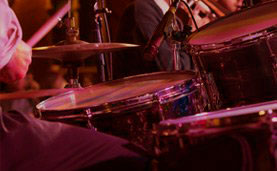Dee Snider Calls Out Fans for Splitting Metal Into ‘Pointless Camps’

Dee Snider for Wikipedia: Fact or Fiction - Loudwire / YouTube
The metal community has always thrived on intensity, individuality, and the sense of belonging that comes from loud guitars and louder crowds. Yet debates over subgenres have become a familiar source of friction, with fans sometimes drawing hard lines between styles that were never meant to be walled off from one another. This ongoing split recently resurfaced when Dee Snider weighed in on the issue, responding directly to a fan who argued that metal should be judged by its strength—not by its label.
Snider echoed the sentiment with characteristic bluntness, stressing that over-classification only weakens the culture that metalheads have built together. His stance grew from the idea that listeners don’t need to enjoy every corner of the genre to show support for the larger community. The real danger, he suggested, is allowing these self-made boundaries to chip away at a scene built on solidarity.
His comments are rooted in a long history of defending metal when it comes under pressure. From the PMRC hearings in the 1980s to more recent conversations about cultural divisions, Snider has consistently framed metal as a shared refuge for misfits and outsiders. That view continues to guide his perspective today as he urges fans to focus on unity rather than unnecessary separation.
Snider’s Longstanding Belief in Metal as a Unified Culture
Dee Snider’s call for togetherness isn’t new—it’s part of the same philosophy he carried while fronting Twisted Sister during the height of the band’s influence. Their music championed collective power and rebellion, helping shape a generation of fans who saw metal as an escape from judgment and conformity. Tracks like “We’re Not Gonna Take It” didn’t just top MTV charts; they invited listeners to stand shoulder to shoulder, regardless of which corner of rock or metal they came from.
That belief in unity grew stronger as the genre expanded. Metal split into dozens of substyles over the decades—thrash, power, glam, black, death, progressive, and countless hybrids—but Snider has always treated these variations as different expressions of the same foundation. He has consistently argued that the spirit of metal lies in its attitude, its volume, and its community, not in technical definitions.
His defense of this broader view speaks to the genre’s cultural importance. Metal has long been a home for people who feel out of place elsewhere, and Snider sees that shared identity as more important than any stylistic disagreement. When he warns that dividing metal into “100 different types” weakens the community, he’s leaning on decades of firsthand experience watching how strong the culture can be when fans stand together.
Breaking Down Barriers Across Subgenres
Snider’s willingness to engage with artists far outside Twisted Sister’s glam-metal roots reinforces his message. He has interacted with extreme metal musicians, praised performers from heavier and darker styles, and acknowledged the talent across scenes that once stood far apart. These connections show that he values passion and authenticity more than genre lines, and that he sees the entire metal landscape as one interconnected movement.
His broader acceptance mirrors a growing sentiment among many musicians who believe the metal community is strongest when walls are removed rather than reinforced. Snider has pointed out that the “walls come down” when people connect through live shows, shared experiences, and the energy of the music itself. Those moments make subgenre labels irrelevant, even for fans who usually stick to their preferred style.
By urging listeners to refocus on unity, Snider highlights the core of what metal has always represented. It’s a culture built on defiance, expression, and loyalty—not on classification. His message serves as a reminder that while tastes may differ, the community’s strength lies in recognizing that metal, at its core, is one powerful and collective voice.











